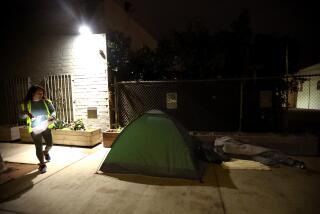Health Coverage Is Sparse in Areas
- Share via
Communities near downtown Los Angeles have remarkably high concentrations of uninsured residents -- in some cases nearly twice the county average, according to a UCLA report released last week.
The study provides one of the most detailed portraits of the distribution of health insurance in the county.
Local health experts said the geographic distribution of the uninsured was not surprising, confirming that poverty is a key determinant. Still, they said they were taken aback by the percentage of uninsured residents in areas such as downtown Los Angeles and South L.A.
“I was surprised that the number continues to be as high as it is,” said Michael Cousineau, director of the division of community health family medicine at USC’s Keck School of Medicine, who did not work on the study. “I think there has to be some concerted effort to look at solutions to this.”
The data pinpoint City Council districts 1 and 9 near downtown as well as unincorporated Lennox and Florence-Graham near South L.A. as having the highest rates of uninsured residents in the county.
Topping the list was District 1, which includes the MacArthur Park area, with 41% of residents younger than 65 saying they had been uninsured for all or part of 2003, compared with a county average of 24%.
District 9, which encompasses skid row, had a 39% uninsured rate; Lennox and Florence-Graham had rates of 38%.
At the other end of the scale were the cities of Rolling Hills Estates, Palos Verdes Estates and La Canada Flintridge, all with uninsured rates of 6%.
E. Richard Brown, director of the UCLA Center for Health Policy Research and the study’s main investigator, said economic barriers partially explain high rates of uninsured residents in certain communities. Small firms in the area find it hard to offer coverage, he said, and rising insurance costs have made it difficult for low-wage earners to afford insurance.
“Any community that has a third or 40% or even 50% of its non-elderly population with no health insurance coverage -- there are deep problems with access to healthcare,” Brown said.






